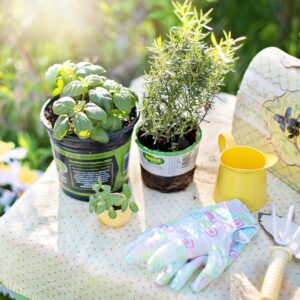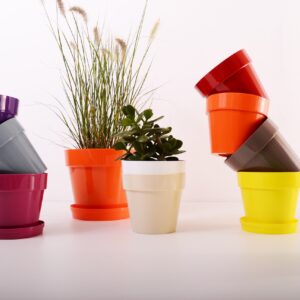
Indoor gardening is a great way to bring nature into your home and enjoy the benefits of gardening year-round. Whether you have limited outdoor space, live in an apartment, or want to add greenery to your interior, here are some detailed tips and tricks for successful indoor gardening:
- Choose the Right Plants: Select plants that thrive indoors and suit your available light conditions. Some popular indoor plants include pothos, spider plants, snake plants, peace lilies, succulents, and herbs like basil and mint. Consider factors like lighting requirements, humidity tolerance, and space availability when choosing plants.
- Understand Lighting Needs: Proper lighting is crucial for indoor plants. Place plants near windows that receive bright, indirect light. South or southwest-facing windows usually provide the most light. If natural light is limited, supplement it with artificial grow lights designed for indoor plants. Adjust the light duration and intensity based on the plant’s needs.
- Provide Adequate Watering: Indoor plants generally require less water than outdoor plants. Avoid overwatering, as it can lead to root rot. Check the moisture level of the soil before watering. Stick your finger about an inch into the soil—if it feels dry, water the plant thoroughly until water drains from the drainage holes. Empty any excess water from the saucer to prevent waterlogging.
- Ensure Proper Drainage: Use pots with drainage holes to prevent water from accumulating at the plant’s roots. If you prefer decorative pots without drainage holes, use a nursery pot with drainage inside and remove it for watering, allowing excess water to drain before placing it back.
- Maintain Humidity: Many indoor plants thrive in higher humidity levels. Increase humidity by misting plants regularly, placing a tray of water near the plants, or using a humidifier. Grouping plants together can also create a microclimate with increased humidity.
- Consider Temperature and Air Circulation: Most indoor plants prefer temperatures between 60-75°F (15-24°C). Avoid placing plants near drafts or heat sources like heaters or air conditioning vents. Good air circulation helps prevent fungal diseases and keeps plants healthy. Use a fan or open windows occasionally to promote air movement.
- Use Well-Draining Potting Mix: Choose a well-draining potting mix specifically formulated for indoor plants. It should retain moisture while allowing excess water to drain freely. Avoid using garden soil, as it may compact in containers and hinder root growth.
- Fertilize Regularly: Indoor plants benefit from regular fertilization, as the nutrients in potting mixes deplete over time. Use a balanced, water-soluble fertilizer or organic fertilizers specifically designed for indoor plants. Follow the instructions on the fertilizer package and apply it at the recommended frequency.
- Prune and Pinch: Prune your indoor plants to maintain their shape, remove dead or yellowing leaves, and promote bushier growth. Pinching off the tips of certain plants can encourage branching and fuller growth. Regular grooming helps keep plants healthy and attractive.
- Monitor and Control Pests: Inspect your indoor plants regularly for pests like aphids, spider mites, or mealybugs. If you notice any signs of pests, isolate affected plants and treat them with organic pest control methods like neem oil, insecticidal soap, or a gentle water spray. Avoid using chemical pesticides indoors.
- Rotate Plants: Rotate your indoor plants occasionally to ensure even growth and prevent them from leaning towards the light source. This helps all sides of the plant receive adequate light and promotes balanced growth.
- Clean Dust and Dirt: Wipe the leaves of your indoor plants regularly with a damp cloth to remove dust and dirt. This helps the leaves breathe and allows them to absorb light more efficiently.
- Propagation: Indoor plants can be propagated through various methods such as stem cuttings, division, or leaf cuttings. Experiment with propagation to expand your indoor garden or share plants with friends and family.
- Be Mindful of Toxic Plants: Some indoor plants can be toxic to pets or humans if ingested. Research the toxicity of plants before bringing them indoors, especially if you have pets or small children. Place toxic plants out of reach or opt for pet-friendly varieties.
By following these detailed tips and tricks, you can create a thriving indoor garden and enjoy the beauty and benefits of plants within the comfort of your home. Remember to adapt your care routine to the specific needs of your plants and enjoy the green oasis you’ve created.




